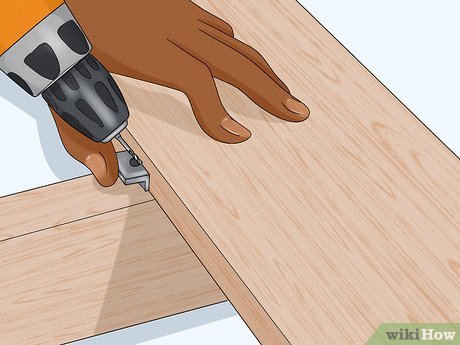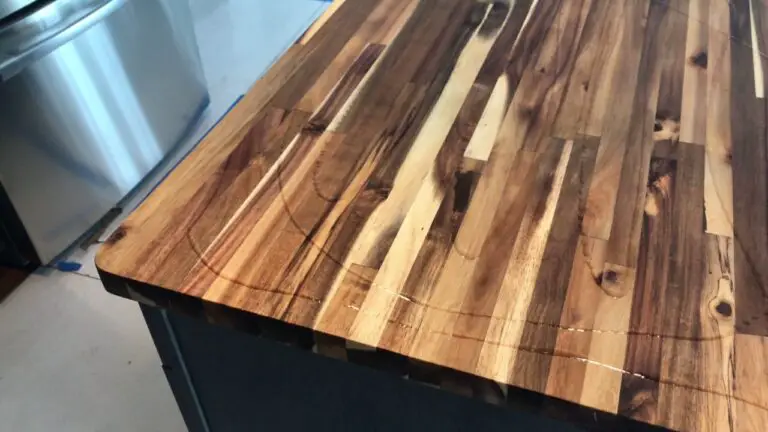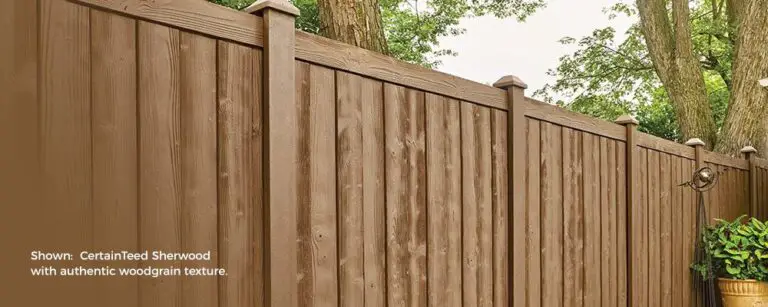How Long Does Composite Wood Last
Composite wood is made from a variety of materials, including recycled plastic and lumber mill scraps. It typically contains a mix of sawdust, glue, and synthetic fibers. Composite wood is a durable building material that can last for decades.
It is resistant to rot and insect damage, and it does not splinter or warp like traditional wood.
Composite wood is a popular material for decks and other outdoor structures. It is made from a mix of wood fibers and plastic, which makes it resistant to rot and termites. But how long does composite wood last?
Most composite decking has a warranty of 20 years or more. That means you can expect it to last for at least two decades – and likely longer. Some brands even offer 25-year or lifetime warranties.
So why choose composite wood over traditional lumber? For one, it requires far less maintenance. There’s no need to stain or seal it, and it won’t splinter or crack like regular wood can.
Composite wood is also an eco-friendly choice, since it’s made from recycled materials.
If you’re looking for a low-maintenance, long-lasting material for your next deck or outdoor structure, composite wood is worth considering.
Disadvantages of Composite Decking
Composite decking is made from a mix of wood fibers and plastic polymers. It’s a popular choice for homeowners because it requires less maintenance than wooden decks and can last for years without rotting or warping. However, there are some disadvantages to composite decking, including its cost and its tendency to scratch and stain.
Cost: Composite decking is one of the most expensive decking materials on the market. It can cost up to twice as much as pressure-treated wood, and it doesn’t always offer the same value in return. While a composite deck will last longer than a wooden deck, it will still eventually need to be replaced – meaning you’ll have to pay for it again down the road.
Tendency to Scratch & Stain: Composite decking is prone to scratching and staining. The plastic fibers in the material can be easily scratched by furniture or shoes, and the surface isn’t easy to clean if food or other stains are dropped on it. You may need to sand or power wash your composite deck from time to time to keep it looking its best – which added costs and effort that you wouldn’t need with other types of decks.
So while composite decks have some great advantages, there are also some drawbacks that you should consider before making your final decision. Weigh these pros and cons carefully before deciding if a composite deck is right for you!
How Long Does a Deck Substructure Last?
When planning to build a deck, one of the first questions you’ll need to answer is how long does a substructure last? The substructure of your deck is the foundation that supports the decking boards and other materials. It includes the joists, ledger board, posts, and footings.
A well-built substructure can last for decades, but there are a few things that can shorten its lifespan.
One factor that affects the longevity of a substructure is the type of wood used. Pressure-treated lumber is treated with chemicals that help it resist rot and insect damage.
Cedar and redwood are naturally resistant to rot and insects and don’t require chemical treatment. These woods are also more expensive than pressure-treated lumber.
Another factor that affects the lifespan of a substructure is exposure to moisture.
If your deck is in an area with high humidity or lots of rain, the wood will degrade faster than if it’s in a drier climate. This is why it’s important to use rot-resistant wood for any part of the substructure that will be exposed to moisture. You should also make sure there’s adequate drainage around your deck so water doesn’t pool up against the structure.
If you take care of your deck and use quality materials, it can provide many years of enjoyment. But even the best-built decks will eventually need repairs or replacement due to wear and tear or damage from weather or insects. When this time comes, you can extend the life of your substructure by making sure any new materials match the existing ones as closely as possible in terms of size, style, and finish.
How Long Does Wooden Decking Last
Wooden decks are a beautiful addition to any home. They provide a great space for outdoor entertaining and can add value to your property. But how long do wooden decks actually last?
The lifespan of a wooden deck depends on a number of factors, including the type of wood used, the quality of the construction, and the amount of exposure to sun and rain. In general, however, most wooden decks will last between 10-15 years before needing to be replaced or repaired.
There are a few things you can do to extend the life of your wooden deck.
First, make sure it is built with high-quality materials and constructed properly. Second, seal or stain your deck regularly to protect it from the elements. And finally, keep an eye out for signs of wear and tear so you can address any issues early on.
With proper care and maintenance, your wooden deck can be a beautiful and valuable asset to your home for many years to come!
How Long Will a Deck Last Without Stain
A deck is a wonderful addition to any home, providing a space for outdoor entertaining and relaxation. But like all outdoor spaces, a deck needs regular maintenance to stay looking its best. One important part of this maintenance is regularly staining or sealing the wood to protect it from the elements.
But how often should this be done? And what happens if you don’t do it at all?
Most experts recommend that you stain or seal your deck at least every two years.
This will help to protect the wood from sun damage, water damage, and everyday wear and tear. If you live in an area with harsh weather conditions (like high humidity or extreme temperatures), you may need to do it more often.
If you neglect to stain or seal your deck, it will start to show signs of wear relatively quickly.
The wood will fade and become discolored, and it will be more susceptible to cracking and splintering. In extreme cases, untreated decks can even start to rot. So if you want your deck to last for years (and look good doing it), make sure to give it the TLC it needs!
How Long Does a Pressure Treated Deck Last
A pressure treated deck can last a long time if it is properly maintained. The key to prolonging the life of your deck is to regularly clean and seal it. With proper care, a pressure treated deck can last for decades.

Credit: charlottedecksandporches.com
What are the Disadvantages of Composite Decking?
Composite decking is a man-made material that is composed of recycled wood fibers and plastic. This material is used to create decks that are low maintenance and durable. However, there are some disadvantages associated with composite decking.
One of the biggest disadvantages is the cost. Composite decking is one of the most expensive materials that you can use to build a deck. In addition, composite decking tends to be hot to the touch and can cause burning feet in the summertime.
Another disadvantage of composite decking is that it can be slippery when wet. This can be a safety hazard, especially for children and seniors. Finally, composite decking does not always look like real wood.
It may have a fake or artificial appearance that some people do not like.
Can Composite Wood Rot?
Composite wood is a popular building material for outdoor projects such as decks and porches. It is durable and resists rot and insect damage. However, composite wood can still rot if it is not properly maintained.
If water seeps into the wood, it can cause the composite material to break down and rot. To prevent this, you should regularly check your composite wood for signs of water damage and seal any cracks or gaps that could allow moisture to enter. With proper care, your composite wood deck or porch will last for many years.
Does Composite Wood Last?
Composite wood is a type of man-made lumber that is typically made from a mix of sawdust, small wood chips, and various adhesives. While it is often promoted as being a durable and low-maintenance alternative to natural wood, the truth is that composite wood can actually be quite delicate and prone to damage. Additionally, it is important to note that composite wood will not last as long as natural wood – even with proper care and maintenance.
Does Composite Wood Hold Up?
Composite wood is a popular choice for many homeowners because it is durable and low maintenance. But does composite wood really hold up?
Here’s a look at the pros and cons of composite wood to help you make the best decision for your home:
Pros of Composite Wood
1. Composite wood is very strong and stable. It won’t crack, warp or splinter like other types of wood.
2. Composite wood is also resistant to rot, mold and insect damage. So, it will last longer than other types of wood.
3. Composite wood doesn’t need to be stained or sealed like other types of wood.
So, it is low maintenance. Simply wash it with soap and water to keep it clean.
4. Composite wood comes in a variety of colors and styles to match any home décor style.
How long does the composite decking last?
Conclusion
Composite wood is a popular choice for many homeowners because it is low maintenance and long lasting. But how long does composite wood actually last?
Most manufacturers of composite wood products claim that their products will last 20-30 years without any significant degradation.
However, some research suggests that composite wood may only last 10-15 years before showing signs of wear and tear.
One study found that the average lifespan of a deck made from pressure treated lumber was 15 years, while the average lifespan of a composite deck was only 10 years. This difference is likely due to the fact that pressure treated lumber is more resistant to rot and insect damage than composite materials.
So, if you’re considering using composite wood for your next home improvement project, be sure to do your research and find out how long the product you’re interested in is expected to last.







